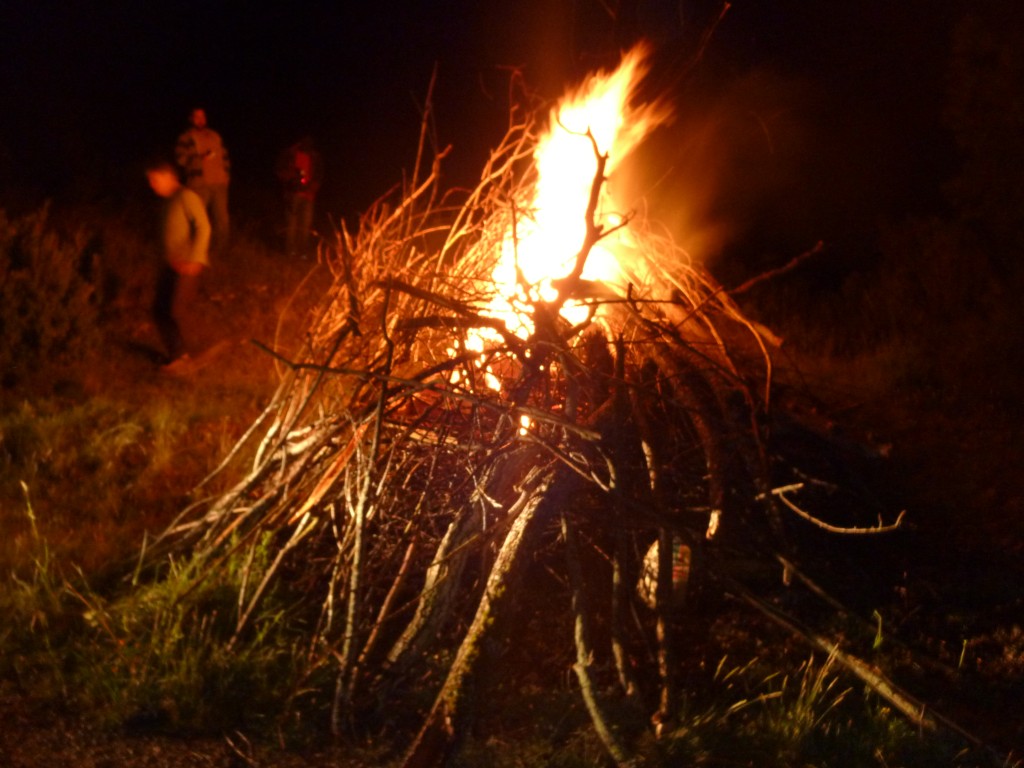Every Saint John’s Eve, coinciding with the summer solstice celebration, the inhabitants of some Pyrenees towns celebrate their personal homage to the sun and to the fire in an ancient festivity that connects them with their land and their community. Communal rituals that neither the time nor the isolation or the depopulation have failed to make them disappear. These are one of the most spectacular festivities that exist and that have been considered as Intangible Heritage of Humanity by UNESCO.
The fallas are burned in a night in which communities fuse with their most rooted traditions, descending through the mountains slopes carrying them and creating spectacular visual effects such as fire flows that are used later on to light the community bonfires.
The genuine fallas festivity has to be experienced on site; excitement, warmth and magic are become part of an indescribable feeling
Several towns from North Ribagorza and Sobrarbe share this festivity with its own peculiarities and variations but creating diversity that invites visitors to get involved first-hand.
Sahún / Saúnc
The Sahún’s festivity is probably the most spectacular. It would appear that tradition of Les falls de Saúnc has been preserved over the course of centuries, with the turning over of the fire balls as the most flamboyant element. Despite the variations, every 23rd June, the participants burn their falla (a hazelnut birch wood stick that is made in advance) at the bonfire located in the town main square. From there, they go all over the streets until the cliff area where they move their fallas over their heads, shaping blazes that light up the sky and create a fire hail.

Laspaúles / Laspaúls, Villarrué, Suils
Laspaúles, Villarrué y Suils also share the fallas festivity. The three twons belong to Laspúles council and keep the 23rd June night tradition. From the lit bonfire located on the top of the hill, the ground path guides the fire snake in which participate mainly grandparents and grandchildren. Each one is in charge of preparing its own falla, generally made with dry grass that they burn in the main bonfire and carry it to the town square. Some people make a wish and all of them celebrate the festivity with a popular dinner.

Bonansa
In Bonansa, the festivity is celebrated during the closest weekend to Saint John’s Eve (23rd June). Lost and recovered several times, this festivity starts nearby Saint Aventín shrine. After sharing the dinner by the sound of the music, each participant lights up the falla on the bonfire (El faro). The participants go downhill towards the town (15-20 minutes approximately) shaping a fire snake that lights up in the darkness. Once in the town streets, the race begins heading for the main square where a second bonfire receives the fallas, starting a party night with traditional music. The festivity comes to an end when people are able to jump over the embers.

Montanuy
The three towns that belong to Montanuy council, Montanuy, Aneto and Castanesa keep the Baixada de fallas tradition. The ritual is similar in all of them, while it varies in the celebration dates: in Montanuy, is the 23rd June; in Aneto, the celebration comes earlier on the first weekend of June, and in Castanesa, coinciding with the main festivities, they celebrate it on Saint Peter’s Eve, the 28th June.
The aforementioned ritual starts when the fallaires (people who carry the fallas) climb the nearby mountain El Faro with their fallas to go downhill at around 11 p.m. There, a bonfire fires each torch that would light up the path to the town, drawing a fire snake that would go all over the streets until El Pi or the town “faro”. Here, the fallaires make a circle and throw their fallas creating a new bonfire. Children join the ritual halfway lighting the fallas in a faro prepared for them. The falla consist of a hazelnut stick with firebrand chips in the tip that keep the fire during all the route.
San Juan de Plan
San Juan de Plan neighbours are the only ones who keep the tradition in Sobrarbe region with the well known ‘La corrida de la falleta`. The 23rd June, at sunset, the participants go to Planeta de la Falla, where they share a dinner. At nighfall, everyone lights the torches to begin the descent to the town.
After a brief stop close to the river, youngsters start the race to the town square keeping the fallas lit. There, everybody piles the torches forming a bonfire that becomes the festivity heart during Saint John’s Eve and the beginning of a day (the 24th June) devoted to “Día de la Cultura Chistabina” (Chistabina culture day).
{{ planning.translation.title }}
-
· {{ partners_tipology.translation.title }} ({{partners_tipology.contents.length}})